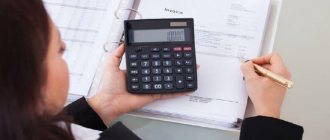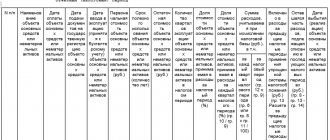For certain reasons, it happens that a company is unable to receive funds for shipped products for a certain period of time. It is precisely in these cases that it is necessary to reflect such operations in the 45th position. Today’s topic is devoted to the questions of what finished products are, what should be understood by shipped goods and how they are sold, what is the purpose of account 45 in accounting, what accounting records are kept, and we will also look at one of the practical examples.
Definition of finished products and goods
Upon completion of the production process, the company obtains a finished product from the raw materials used. This product is fully stocked, transferred to the warehouse and is ready for sale.
Finished products should be perceived as part of the inventory that will subsequently be sold and meet the required technical parameters and quality standards.
Goods that were received or purchased from business entities or citizens for subsequent sale can also be perceived as part of production inventories.
If we consider the flow diagram of the finished product, it consists of the following stages:
- receipt of a batch of product at the warehouse;
- shipment of the finished batch to consumers.
When maintaining accounting records, a unit of a finished product is determined by the company in such a way that the company's management can obtain adequate information about the status of these inventories, as well as ensure adequate control over their movement and balances. Finished products enter the warehouse from the production workshop under the responsibility of the material person.
Characteristics and subaccounts
The accounting rules do not provide for the opening of sub-accounts to account 45, however, analytical accounting must be maintained by types of valuables shipped (names and general groups of inventories) and their locations (commission agent, contract, etc.).
This account is active and is used when the date of shipment of goods and the date of recognition of income on them do not coincide. In practice, such cases arise for the following three reasons:
- if the rules of business turnover or the contract provide for non-standard conditions for the transfer of rights to a product that differ from the generally accepted ones (as a rule, in export transactions);
- when transferring goods for further sale on a commission basis;
- on barter transactions.
Goods shipped are...
This definition should be understood as those inventories, the proceeds from the sale of which cannot be recorded in the appropriate accounting records.
If we talk about Form No. 1 of financial statements, then the price of finished products shipped to customers is recorded on line 080 of the balance sheet. In this line, the accountant enters the debit balance of account 45 at the end of each reporting period.
In general, property rights to certain inventories are transferred to the customer after their delivery last. However, there are some exceptions to this general rule:
- in the case of transfer of goods in accordance with an exchange agreement (in this case, the buyer acquires property rights only after the counter shipment has been made;
- if the goods are transferred under a purchase and sale agreement, which provides for a special procedure for transferring ownership. According to such documents, the person purchasing the goods receives ownership of it only after certain conditions are met, for example, payment of its cost or delivery to the designated point;
- in case of transfer to an intermediary for further sale. In this case, we are talking about a commission, commission or agency agreement.
| From credit accounts | To the debit of accounts |
| 76 Settlements with different debtors and | 10 Materials |
| creditors | 20 Main production |
| 79 On-farm settlements | 23 Auxiliary productions |
| 90 Sales | 41 Products |
| 94 Shortages and losses from damage to valuables | 43 Finished products |
| 99 Profit and loss | 44 Selling expenses |
| 71 Settlements with accountable persons | |
| 76 Settlements with different debtors and | |
| creditors | |
| 79 On-farm settlements | |
| 91 Other income and expenses |
Products shipped or handed over at the place of manufacture, payment documents for which were presented by buyers at the time of purchase, are written off in the order of sale from account 43 “Finished products” to the debit of subaccount 90-2 “Cost of sales”.
If the supply agreement provides for a gap from the time of transfer of the right of ownership, use, disposal of the shipped products and the risk of their accidental destruction during transfer from the manufacturer to the buyer, then account 45 “Goods shipped” is used to account for the cost of these products from the moment of their shipment until the moment of payment. . When goods are shipped, they are reflected as follows:
Dt sch. 45 “Goods shipped” - Ct. 43 “Finished products” - before the transfer of ownership.
Accounting for sales of finished products
Shipment of products to buyers must be confirmed by payment. Therefore, the sale of products involves its sale, i.e., a change of owner.
According to regulatory documents on accounting, products are considered sold (sold) from the moment they are shipped (issued) to customers and payment documents are presented to them. The transfer of ownership occurs at the moment of transfer of the product to the buyer or transport organization.
Revenue from the sale of products manufactured by an enterprise characterizes the amount of their sales. Products sold on the market are considered sold, and the moment of sale is the time of transfer of ownership of the product. At OJSC NZEMM, the moment of sale (transfer of ownership of sold goods, works, services) is recognized as the fact (date) of shipment of products to the buyer and transfer of payment documents to him.
Sales of products at JSC NZEMM are carried out in accordance with concluded agreements with customers or through free sale to the public at wholesale and retail prices.
The purpose of recording business transactions for sales in accounting accounts is to identify the financial result from the sale of products. The financial result is calculated monthly on the basis of documents confirming the sale of products.
To account for sales at OJSC NZEMM, they use account 90 “Sales” and open subaccounts for analytical accounting: 90-1 “Revenue”, 90-2 “Cost of sales”, 90-3 “VAT”, 90-4 “Excise taxes”, 90-5 “Business expenses”, 90-6 “Administrative expenses”, 90-9 “Profit/loss from sales”.
The debit of account 90 “Sales” shows the full cost of products sold and the amount of VAT, and the credit shows the sales value, including VAT.
At the end of each month, under account 90 “Sales”, the turnover on the debit of subaccounts 90-2 “Cost of sales”, 90-3 “VAT”, 90-4 “Excise taxes” is compared with the turnover on the credit of subaccount 90-1 “Revenue”. Based on the results of this comparison, the financial result is calculated: if the amount of credit turnover is higher than the debit amount, the organization has a profit, otherwise - a loss (Table 1.4.1).
Table 1.4.1.
Account 90 “Sales”
| Dt | CT |
| 1. Actual production or standard (planned) cost of products sold (work performed, services rendered) 2. Deviation of the actual production cost of products (work, services) 3. Value added tax on products sold (work performed, services rendered) 5. Commercial expenses 6. General business expenses (according to accounting policies) 9. Profit from the sale of products (performance of work, provision of services) (1>2+3+4+5+6) | 1. Revenue from the sale of products (performance of work, provision of services) at sales prices 9. Loss from the sale of products (performance of work, provision of services) |
With the final turnover of the reporting period, this financial result is written off from subaccount 90-9 “Profit/loss from sales” to account 99 “Profits and losses”. If a loss is incurred, a reverse entry is made.
With the final entries, the cumulative amounts to account 90 “Sales” for all subaccounts (except for subaccount 90-9 “Profit/loss from sales”) are closed with internal entries to subaccount 90-9 “Profit/loss from sales”.
The procedure for synthetically accounting for product sales depends on the chosen method of accounting for product sales. Organizations are allowed to determine revenue from the sale of products for tax purposes either at the time of payment for shipped products, work performed, services rendered, or at the time of shipment of products and presentation of payment documents to the buyer or transport organization.
In accordance with Art. 167 of the Tax Code of the Russian Federation, the date of sale of goods (work, services), depending on the adopted accounting policy for tax purposes, is determined:
— for organizations that have chosen the “by shipment” sales method — as the earliest of the following dates:
— the day of shipment of goods (works, services) or transfer of ownership of the goods;
— day of payment for goods (works, services)
— for organizations that have chosen the “on payment” sales method — as funds are received, as the day of payment for goods (work, services).
In this case, payment for goods (work, services) recognizes the termination of the counter obligation to purchase the specified goods (work, services) to the taxpayer, which is directly related to the supply (transfer) of these goods (work, services). In accounting, products are considered sold at the time of their shipment (due to the transfer of ownership of the product to the buyer).
That is why, with both methods of selling products, for tax purposes, finished products shipped or presented to customers at sales prices are reflected in the debit of account 62 “Settlements with buyers and customers” and the credit of account 90 “Sales”.
At the same time, the cost of products shipped or presented to the buyer is written off to the debit of account 90 “Sales” from the credit of account 43 “Finished products”. The organization calculates VAT and excise tax on the amount of revenue (according to the established list of goods).
With the “by shipment” sales method, the amount of accrued VAT is reflected in the debit of account 90 “Sales” and the credit of account 68 “Calculations for taxes and fees.” This posting reflects the organization’s VAT debt to the budget, which is then repaid by transferring funds to the budget (debit to account 68 “Calculations for taxes and fees” and credit to cash accounts).
With the “on payment” sales method, the organization’s debt to the budget for VAT arises after the buyer pays for the products. Therefore, after shipping products to customers, organizations reflect the amount of VAT on products sold in the debit of account 90 “Sales” and the credit of account 76 “Settlements with various debtors and creditors.”
Received payments for sold products are reflected in the debit of account 51 “Current account” and other accounts from the credit of account 62 “Settlements with buyers and customers”. After receiving payments, organizations using the “on payment” sales method reflect the VAT debt to the budget:
Dt sch. 76 “Settlements with various debtors and creditors” - Ct. 68 “Calculations for taxes and fees.”
Repayment of debt to the budget for VAT is formalized by the following posting:
Dt sch. 68 “Calculations for taxes and fees” - Ct. 51 “Current account”, 52 “Currency account”, etc.
Thus, the difference in the methods of selling products for tax purposes is as follows. With the “by shipment” sales method, the debt to the budget for VAT is recorded immediately in one transaction:
Dt sch. 90 “Sales” and Ct. 68 “Calculations for taxes and fees.” With the “on payment” sales method, two entries are made for VAT:
a) Dt sch. 90 “Sales” - Kt. 76 “Settlements with various debtors and creditors” - reflects the amount of VAT on products sold;
b) Dt sch. 76 “Settlements with various debtors and creditors” - Ct. 68 “Calculations for taxes and fees” - reflects the VAT debt to the budget.
At JSC NZEMM, revenue from the sale of products for tax purposes is determined at the time of payment for shipped products.
It should be noted that the “by shipment” sales method has not yet become widespread in our country (except for the construction industry), although it is widely used in international practice. The main reasons for this are the insolvency of many organizations, the essentially lack of bill circulation and insurance guarantees of payment, the imperfection of payment forms and banking services, etc. In the future, these shortcomings will be eliminated and the second method of accounting for product sales will find wide application.
If revenue from the sale of shipped products cannot be recognized in accounting for a certain time (for example, when exporting products), then account 45 “Goods shipped” is used to account for such shipped products. When the specified products are shipped, the oka is written off from the credit of account 43 “Finished products” to the debit of account 45 “Goods shipped”. After receiving a notice of recognition of revenue from the sale of products, the supplier writes it off from the credit of account 45 “Goods shipped” to the debit of account 90 “Sales”. At the same time, the cost of products at the selling price (including VAT and excise taxes) is reflected in the credit}' account 90 and the debit of account 62 “Settlements with buyers and customers”. The amount of VAT calculated on the products sold is reflected in the debit of account 90, depending on the sales method used by the organization on the credit of accounts 68 and 76. When using account 76, after payment for the sold products by customers, the accrued amount of VAT is written off from the debit of account 76 to the credit of account 68.
The following is the procedure for accounting entries for the sale of products, provided that revenue from the sale of products cannot be recognized in accounting for a certain time (Table 1.4.3).
Account 45 “Goods shipped” also indicates finished products and goods transferred to other enterprises for sale on commission and other similar basis. When such products and goods are released, they are written off from the credit of accounts 43 “Finished Products” and 41 “Goods” to the debit of account 45 “Shipped Goods”. When a notice is received from a commission agent about the sale of products and goods transferred to him, they are written off from the credit of account 45 “Goods shipped” to the debit of account 90 “Sales” with simultaneous reflection in the debit of account 62 “Settlements with buyers and customers” and the credit of account 90 “Sales” .
The cost of completed work and rendered services is written off: at actual or standard (planned) cost from the credit of account 20 “Main production” or 40 “Output of products (works, services)” to the debit of account 90 “Sales” as invoices are presented for work performed and services. At the same time, the amount of revenue is reflected in the credit of account 90 “Sales” and the debit of account 62 “Settlements with buyers and customers”.
Recently, advance payment of finished products scheduled for delivery has been widely used.
When prepayment is made for the delivery specified in the contractual terms, the supplier issues an invoice and sends it to the buyer. After receiving this document, the buyer transfers the amount of payment for the products to the supplier by payment order; in case of prepayment, the amount of received payments is reflected in the accounting records until the moment of shipment of the products as accounts payable and is recorded in the following accounting entry:
Dt sch. 51 “Current accounts” - Kt. 62 “Settlements with buyers and customers.”
After the product has been shipped, it is considered sold and is written off to the debit of account 62 from the credit of account 90 “Sales”.
If the prepayment is in the form of an advance payment and is not directly related to a specific invoice, then the received payments are reflected on the credit of account 62 “Settlements with buyers and customers”.
The buyer may refuse to pay for products shipped to him if the goods were sent incorrectly, in violation of delivery deadlines, low quality products, or for other reasons. In this case, the supplier’s accounting department makes reverse entries for the shipment of products;
a) Dt sch. 43 “Finished products” - Ct. 90 "Sales";
b) Dt sch. 90 “Sales” - Kt. 62 “Settlements with buyers and customers.”
Selling expenses include expenses associated with the sale of products (works, services) paid by the supplier. Selling expenses together with production costs form the total cost of products sold.
Sales costs at OJSC NZEMM plant include:
- costs of containers and packaging of products in finished product warehouses (cost of services of its auxiliary workshops engaged in the manufacture of containers and packaging);
— costs of delivering products to the point stipulated by the contract;
- other sales expenses (storage costs, part-time work, sub-sorting, etc.).
To account for commercial expenses, use active account 44 “Sales expenses”. The debit of this account takes into account the costs of selling from the credit of the corresponding material, settlement and cash accounts, in particular:
10 “Materials” - for the cost of consumed containers;
23 “Auxiliary production” - for the cost of services for sending products from the warehouse to the departure station or to the buyer’s warehouse using the company’s vehicles;
60 “Settlements with suppliers and contractors” - for the cost of services for sending products to the buyer, provided by third parties;
70 “Settlements with personnel for wages” - for the payment of workers accompanying the products.
Analytical accounting for account 44 “Sales expenses” is kept in the statement of accounting for general business expenses, deferred expenses and sales expenses for the above expense items.
Also, the cost of selling finished products includes commercial expenses. Reflection of business expenses on accounts is presented in diagram 1.4.2.
Table 1.4.2.
Sale of shipped goods
The reflection of transactions for the sale of the shipped lot will depend on the conditions reflected in the contract, including such points as:
- how the goods are transferred to the buyer, i.e. is there an intermediary or is the work carried out directly;
- at what stage the ownership of the goods passes to the buyer, for example, at the time of shipment or after the transfer of funds as payment for the products received.
Let us assume that the contract concluded with the buyer includes special conditions for the transfer of ownership and disposal of purchased products. The terms of such an agreement should also provide for the risk of accidental damage to the goods received after receiving payment for them.
Correspondence on debit and credit
Accounting transactions for accounting for goods are reflected in the following entries:
- Dt 45 Kt 41, 43 – the cost of shipped goods is formed;
- Dt 45 Kt 44 – commercial expenses are written off for the cost of goods shipped;
- Dt 62 Kt 90.1 – revenue from sales is recognized;
- Dt 90.2 Kt 45 – the accounting cost of the property sold is written off.
Regardless of the nature and procedure for documenting, operations for the sale of goods and finished products are subject to VAT and income tax.
The VAT tax base is determined on the date of receipt of advance payment from the buyer or the date of shipment, depending on which transaction occurred earlier. If the conditions for revenue recognition have not yet been met, tax is charged on the amount of the advance received based on the rate of 18/118.
At the time of actual sale, tax should be calculated from the cost of goods sold, and previously accrued VAT on the advance payment should be deducted. For commodity exchange transactions, the tax is calculated after the actual shipment of valuables, while the fact of transfer of ownership of them does not matter.
Accounting transactions for accounting for settlements with the budget for VAT are reflected in the following entries:
- Dt 76AV Kt 68.02 – VAT is charged on the prepayment amount;
- Dt 90.3 Kt 68.02 – VAT is charged on the sales amount;
- Dt 68.02 Kt 76AV – accepted for deduction of VAT from the amount of the offset prepayment.
Necessity and significance of position 45
45 account is necessary in order to summarize data on available shipped products and their movement, the proceeds from the sale of which cannot be recognized at this stage. For this item, companies also keep records of finished products transferred to the commission for subsequent sale.
The specified account is active. Accounting reflects the cost of the shipped consignment based on its actual cost and the cost of shipping the goods.
Account 45 is debited in correspondence with positions 41 and 43.
Postings to account “45.01”
By debit
| Debit | Credit | Content | Document |
| 45.01 | 000 | Entering initial balances: purchased goods shipped | Entering balances |
| 45.01 | 41.01 | Transfer of goods for commission (accounting with the consignor) | Sales (acts, invoices) |
| 45.01 | 41.01 | Shipment of goods to third parties without transfer of ownership | Sales (acts, invoices) |
| 45.01 | 41.04 | Shipment of purchased products to third parties without transfer of ownership in organizations engaged in industrial and other production activities | Sales (acts, invoices) |
| 45.01 | 41.04 | Transfer of purchased products to commission in organizations engaged in industrial and other production activities (accounting with the consignor) | Sales (acts, invoices) |
By loan
| Debit | Credit | Content | Document |
| 90.02.1 | 45.01 | Write-off of the cost of goods previously shipped externally without transfer of ownership for activities not subject to UTII | Sales of shipped goods |
| 90.02.1 | 45.01 | Write-off of the cost of purchased goods transferred to commission for activities not subject to UTII (accounting with the principal) | Commission agent's report on sales |
| 90.02.2 | 45.01 | Write-off of the cost of purchased goods transferred to commission for activities subject to UTII (accounting with the principal) | Commission agent's report on sales |
| 90.02.2 | 45.01 | Write-off of the cost of goods previously shipped externally without transfer of ownership for activities subject to UTII | Sales of shipped goods |










